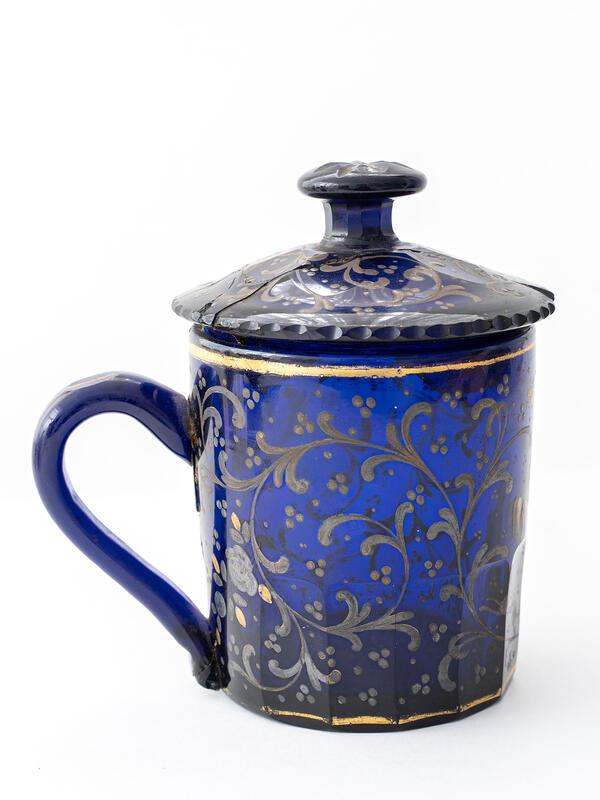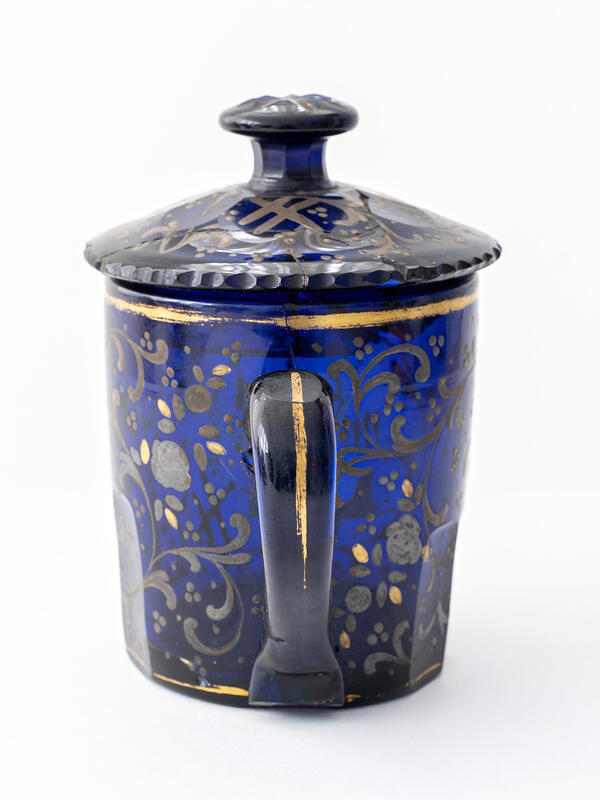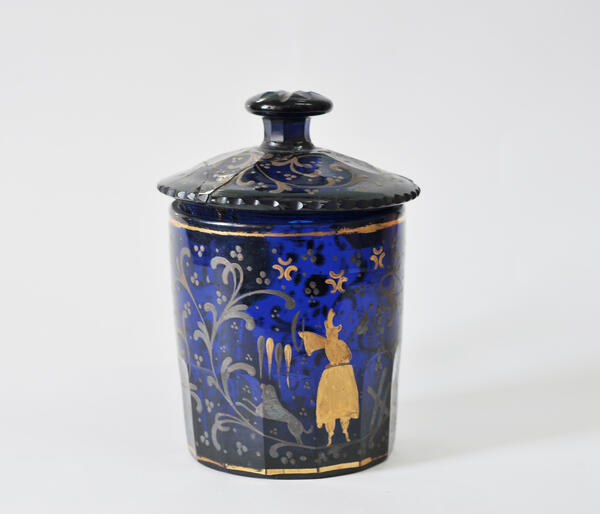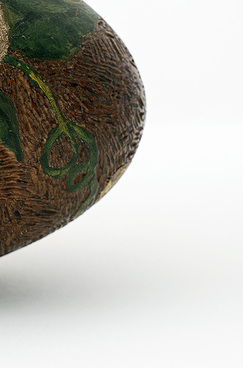The most renowned glass factory in the Russian Empire was founded in 1735, and in 1792 it was acquired by the state and became known as the Imperial Glass Factory. Subsequently, the factory produced items exclusively for the Imperial Court, supplying it with exemplary glass and crystal artifacts for two centuries. In the second half of the 18th century, colorless glass was replaced by “colored matter”: various types of glass were developed, including uranium, which ranged from bright yellow to emerald, alabaster, topaz, amethyst, and manganese glass… The most popular were “golden ruby” glass of various shades of red and “cobalt” or “smalt” glass with up to 20,000 tones.
The cup with a cobalt glass lid, which belonged to the Khlebnikov family, is painted with golden floral ornaments and decorative vignettes, complemented with human and animal figures. In the museum, this exhibit is presented in “Vera’s Room”, next to the work “Still Life with Tangerines” (the 1930s) which features the cup. In the picture, the cup is not as detailed, yet recognizable.
The eastern-style cup belonged to Vera Khlebnikova herself. It points to the artist’s keen interest in Eastern art, the “blue miracle of Persia”, poeticized by Velimir Khlebnikov, Vera’s “quiet Brother”. Both of them, born in the Kalmyk steppes, developed a deep connection with the culture of “wandering Buddhists”, descendants of the Mongol-Oirat tribe. When Vera was four years old, the family lived in Mordovia, where the girl learned Mordovian myths and folklore.
From 1913 to 1916, Vera Khlebnikova lived in France and Italy, perfecting her skills, and admitted that she noticed in herself “signs of obsession with the East.” She wrote to her mother from Paris, “I always wear a Mordovian beaded cord around my neck, which I am proud of.”
Velimir Khlebnikov dreamed of visiting India, where “people and deities are together.” Vera was invited to come to the country, as she reported in a letter, “I am welcome in the near future to the Forests of the Ganges or Benares.” She also translated works from Hindi, one of which was donated to the museum by her son May Miturich-Khlebnikov.





